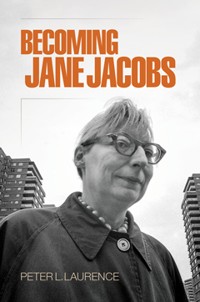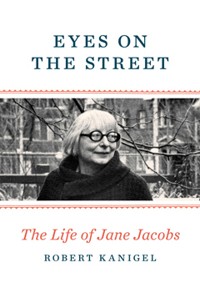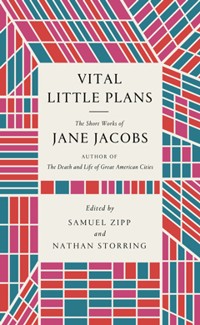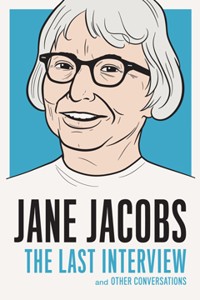Nathaniel Rich
The year she turned
18, Jane Butzner traveled from her hometown of Scranton, Pennsylvania,
to the Appalachian hamlet of Higgins, North Carolina, where she
encountered a mystery that haunted her for the rest of her life. It was
1934, the midpoint of the Great Depression, a difficult time to hold a
job, even an unpaid one. Butzner—later Jacobs—had been laid off from The Scranton Republican
after almost a year working without pay as a cub reporter. At her
parents’ suggestion, she went to live in the mountains with her aunt
Martha Robison, a Presbyterian missionary. Robison had come to Higgins
12 years earlier on a mission and was so staggered by its poverty that
she refused to leave. There were no paved roads, school was rarely in
session, the illiterate preacher believed the world was flat, and
commerce was conducted by barter. Robison built a church and a community
center, adopted children, and established classes in pottery, weaving,
and woodwork. Nevertheless, the townspeople continued to live a
primitive existence in which, as Robison’s niece later said, “the
snapping of a pitchfork or the rusting of a plow posed a serious
financial crisis.”
Jane Jacobs wrote about Higgins in Cities and the Wealth of Nations (1984) and Dark Age Ahead
(2004), but its negative example looms over her entire body of work.
Higgins had not always been backwards. In the early 1700s, as Jacobs
noted in Cities and the Wealth of Nations, its founders, three English brothers named Higgins and their families, possessed a wide range of knowledge and skills:spinning and weaving, loom construction, cabinetmaking, corn milling, house and water-mill construction, dairying, poultry and hog raising, gardening, whiskey distilling, hound breeding, molasses making from sorghum cane, basket weaving, biscuit baking, music making with violins …By the 1920s, the brothers’ descendants had lost nearly all of these, apart from making molasses, which was sold in the county seat, Burnsville, 12 miles away. Most residents had never traveled that far, however, because the only way to get there was by mule on a rough mountain track. Candles were a vanishing luxury. After the few remaining cows died, there would be no more milk or butter. One woman still remembered how to weave baskets, but she was close to death. When Robison suggested building the church with large stones from the creek, the community elders rebuked her. Over generations the townspeople had simply forgotten how to build with stone. They had lost the knowledge that such a thing was possible.
Such a thing could happen if cities in too many places stagnated simultaneously or in quick succession. Or it could happen if the world were to become, in fact, one single sluggish empire … We all have our nightmares about the future of economic life; that one is mine.In the centenary of her birth, Jacobs has been remembered as our Solon of cities: a shrewd theorist who revealed how cities work, why they thrive, and why they fail. Jacobs lived to the age of 89, long enough to see her renegade theories become conventional wisdom. No one questions anymore that lively neighborhoods require diversity of use and function, that more roads lead to more cars, that historic buildings should be preserved, that investment in public transportation reduces traffic and promotes neighborhood activity, that “flexible and gradual change” is almost always preferable to “cataclysmic,” broad-stroke redevelopment.
Urban life was Jacobs’s great subject. But her great theme was the fragility of democracy—how difficult it is to maintain, how easily it can crumble. A city offered the perfect laboratory in which to study democracy’s intricate, interconnected gears and ballistics. “When we deal with cities,” she wrote in The Death and Life of Great American Cities (1961), “we are dealing with life at its most complex and intense.” When cities succeed, they represent the purest manifestation of democratic ideals: “Cities have the capability of providing something for everybody, only because, and only when, they are created by everybody.” When cities fail, they fail for the same reasons democracies fail: corruption, tyranny, homogenization, overspecialization, cultural drift and atrophy.
Four new books are
united in their determination to undermine the seductive myth that
Jacobs, as her biographer Peter L. Laurence puts it, “was primarily a
housewife with unusual abilities to observe and defend the domestic
surroundings of her Greenwich Village home.” This line was codified in
1962 by The New Yorker’s architecture critic Lewis Mumford in a 30-page review of Death and Life
that called the book “a mingling of sense and sentimentality, of mature
judgments and schoolgirl howlers.” (If Mumford was responsible for the
article’s headline, “Mother Jacobs’ Home Remedies,” he seems to have
regretted it. In his 1968 collection, The Urban Prospect, it
appears under the moderately less chauvinistic “Home Remedies for Urban
Cancer.”) The allegation of amateurism often went unchallenged because
most of Jacobs’s considerable body of writing before The Death and Life of Great American Cities had been published without a byline.

After her six-month purgatory in Higgins, Jacobs moved to Brooklyn with the goal of becoming a writer. Within a year, she began writing a succession of Lieblingesque columns for Vogue about New York’s fur, diamond, leather, and flower districts: “All the ingredients of a lavender-and-old-lace story, with a rip-roaring, contrasting background, are in New York’s wholesale flower district.” She signed up for classes at Columbia’s University Extension Program, many of them in economic geography, the interdisciplinary study of economics, history, culture, and the environment. (She would later call herself a “city naturalist.”) In one of these courses, Jacobs likely encountered Henri Pirenne’s Medieval Cities: Their Origins and the Revival of Trade (1925), which explained how cities promoted democratic values, and which she cited frequently throughout her career. But it was a pair of classes in American constitutional law that inspired her first book.

The publication, which originated in an agreement between Franklin D. Roosevelt and Joseph Stalin at Yalta to expand cultural diplomacy between the two nations, was designed to resemble Life magazine, with illustrated features about Radio City Music Hall, Benjamin Franklin, Arizona deserts, and the Senate. The circulation was initially limited to 10,000 copies, not nearly enough to satisfy demand; Laurence writes that though the official price in 1946 was 10 rubles (83 cents), it sold on the black market for 1,000. (The Soviets produced a counterpart publication, Soviet Life, but despite its editors’ best efforts—“Leonid I. Brezhnev’s Reminiscences,” “A Guide to the 15 Union Republics,” “Tashkent, Seattle’s Sister City”—it somehow failed to attract a commensurate following in the U.S.) In a Manhattan office building near Columbus Circle, Jacobs wrote articles about American cafeterias, the World Series, and modern art, and modeled maternity clothes for a feature on women’s fashion.
The column unsettled Jacobs, who responded with a thorough investigation of life in America’s inner-city neighborhoods. In her article, she proposed slum-clearing and the construction of high-rise apartment towers, remedies she would later excoriate. Kanigel suggests that Jacobs was even then not entirely satisfied with these arguments. “This seemingly narrow question would slip out of its original borders,” he writes, “become something big to chew on, broaden into one of the biggest questions of all: What, really, was the Good Life?” How, in other words, could urban policy promote life, liberty, and the pursuit of happiness?

By 1952, she’d had enough. After yet another inquiry—requesting her views on, among other things, the Marshall Plan, the United Public Workers of America, and atomic energy—she sent the board an 8,000-word defense that remains the most powerful declaration of her moral convictions. “I was brought up to believe that there is no virtue in conforming meekly to the dominant opinion of the moment,” she wrote, defending her integrity and shaming her inquisitors.
I was encouraged to believe that simple conformity results in stagnation for a society, and that American progress has been largely owing to the opportunity for experimentation, the leeway given initiative, and to a gusto and a freedom for chewing over odd ideas. I was taught that the American’s right to be a free individual, not at the mercy of the state, was hard-won and that its price was eternal vigilance, that I too would have to be vigilant.In The Death and Life of Great American Cities, Jacobs sought to translate these principles of individual liberty into urban design.
This was not an
intuitive process. What ratio of green space to residential acreage was
most conducive to individual liberty? Did tenement buildings or
high-rise towers create better opportunities for experimentation? What
block length, what width of sidewalk, what frequency of stoplights best
encouraged the chewing-over of odd ideas?
She pursued this line of questioning at Architectural Forum,
the leading architectural publication of its day, after resigning from
the State Department in 1952. The magazine was edited by Douglas
Haskell, whom Laurence identifies as the crucial figure in Jacobs’s
intellectual maturation. Like Jacobs, Haskell lacked an academic
pedigree and paired “an anti-utopian streak” with a faith in the power
of architecture to bring about social change, for better and for worse.
Shortly after her hire, Haskell announced that Forum would
intensify its emphasis, already significant, on “the problems of
cities.” Was urban renewal—which James Baldwin would later call “Negro
removal”—improving the slums of America’s great cities? If not, what
else should be done?
“Not only did [Bacon] and the people he directed not know how to make an interesting or a humane street,” Jacobs later said, “but they didn’t even notice such things and didn’t care.” In early 1956 she took a series of tours of East Harlem led by William Kirk, a community activist and the director of the Union Settlement Association. He showed her how the construction of 10 housing projects had destroyed not only the neighborhood’s small businesses but the communities they had sustained. A more personal incitement came from Robert Moses’s long-standing plans to redevelop Jacobs’s own beloved neighborhood of Greenwich Village. Moses proposed extending Fifth Avenue through Washington Square Park in the form of a sunken highway, and razing 26 blocks to clear space for a pair of gargantuan housing projects. When Douglas Haskell asked Jacobs to take his speaking slot at an urban-design conference at Harvard in April 1956, before an audience of the nation’s most powerful planners and critics, she let them have it.
Her 1,500-word speech, a version of which appears in Vital Little Plans, became the basis for The Death and Life of Great American Cities. Her main argument was Kirk’s: Small neighborhood stores, ignored by the planners in their grim demolition derby, were essential social hubs. She added that sidewalks, stoops, laundries, and mailbox areas were also indispensable centers of community activity, and that sterile, vacant outdoor space served nobody. “The least we can do,” she said, “is to respect—in the deepest sense—strips of chaos that have a weird wisdom of their own.”
In Death and Life, Jacobs converted democratic values into design policy. This was no magic trick—it was achieved through close observation. Through better reporting, she became a better theorist. The vitality that planners like Bacon and Moses hoped to create already existed. She had seen it herself, not only in the tenements of East Harlem but in Greenwich Village. The two neighborhoods—one doomed, one celebrated for its bohemian spirit—were more alike than not, just as the blocky brick towers of Stuyvesant Town, the celebrated middle-class development where Jacobs’s sister lived, were as dreary as Harlem’s carceral George Washington Houses.
Reduced to a word, Jacobs’s argument is that a city, or neighborhood, or block, cannot succeed without diversity: diversity of residential and commercial use, racial and socioeconomic diversity, diversity of governing bodies (from local wards to state agencies), diverse modes of transportation, diversity of public and private institutional support, diversity of architectural style. Great numbers of people concentrated in relatively small areas should not be considered a health or safety hazard; they are the foundation of a healthy community. Dense, varied populations are “desirable,” Jacobs wrote,
because they are the source of immense vitality, and because they do represent, in small geographic compass, a great and exuberant richness of differences and possibilities, many of these differences unique and unpredictable and all the more valuable because they are.
James Madison couldn’t
have put it better, though he tried. He addressed the issue in
Federalist Paper No. 9, his effort to answer one of the most vexing
problems facing the Framers of the Constitution: how to safeguard their
new democracy against insurrection or despotism. Madison argued that as
you increase the “variety of parties and interests” contained within a
republic, “you make it less probable that a majority of the whole will
have a common motive to invade the rights of other citizens.” Jacobs saw
that the same principle held in cities. It is not a coincidence that
she described city planners, and the businessmen and politicians who
enabled them, as tyrants: “neurotic,” “destructive,” and “impossibly
arrogant.”
“We need all kinds of diversity,” Jacobs concluded in Death and Life, “so the people of cities can sustain (and further develop) their society and civilization.” In later books, particularly The Economy of Cities (1969) and Cities and the Wealth of Nations
(1984), she expanded this point, arguing that the fate of a
civilization rested on the vitality of its major cities. In her final
book, published in 2004, she applied her analysis to our own
civilization. What was the current condition of our great cities? How
did America stack up against Rome, Mesopotamia, Babylon? What future
could we expect if we continued on our current path? She called the book
Dark Age Ahead.In her comparative study of fallen empires, Jacobs identifies common early indicators of decline: “cultural xenophobia,” “self-imposed isolation,” and “a shift from faith in logos, reason, with its future-oriented spirit … to mythos, meaning conservatism that looks backwards to fundamentalist beliefs for guidance and a worldview.” She warns of the profligate use of plausible denial in American politics, the idea that “a presentable image makes substance immaterial,” allowing political campaigns “to construct new reality.” She finds further evidence of our hardening cultural sclerosis in the rise of the prison-industrial complex, the prioritization of credentials over critical thinking in the educational system, low voter turnout, and the reluctance to develop renewable forms of energy in the face of global ecological collapse.
In the foreword to the 1992 Modern Library edition of Death and Life, Jacobs likens cities to natural ecosystems. “Both types of ecosystems,” she writes, “require much diversity to sustain themselves … and because of their complex interdependencies of components, both kinds of ecosystems are vulnerable and fragile, easily disrupted or destroyed.” Dark Age Ahead reminds us how many powerful, technologically advanced cities—and empires—have come before us, only to fade to dust. When they fall, they do not recover. The vanished way of life “slides into an abyss of forgetfulness, almost as decisively as if it had not existed.” Karl Marx, who spent his life studying the subject, observed that history repeats itself, the first time as tragedy, the second time as farce. This topsy-turvy election year makes one wonder whether he might have gotten that backwards. We’ve had farce, that much is certain. What will the next time bring?
Niciun comentariu:
Trimiteți un comentariu